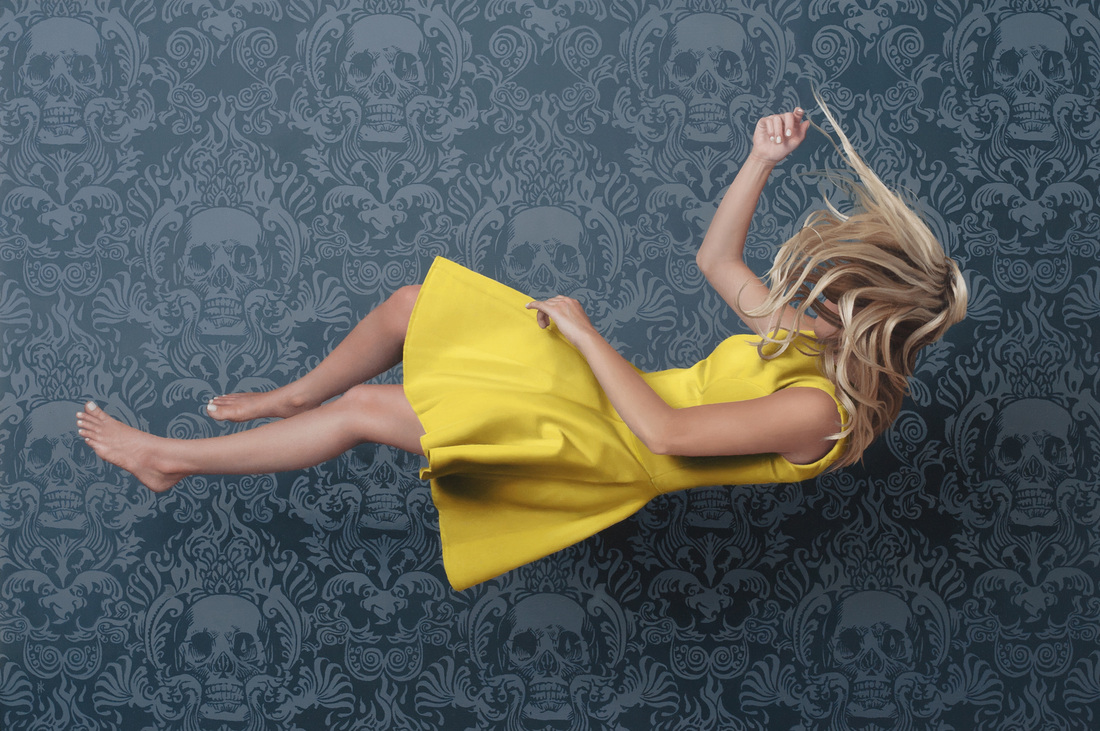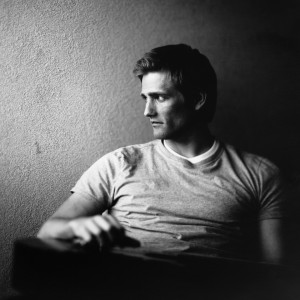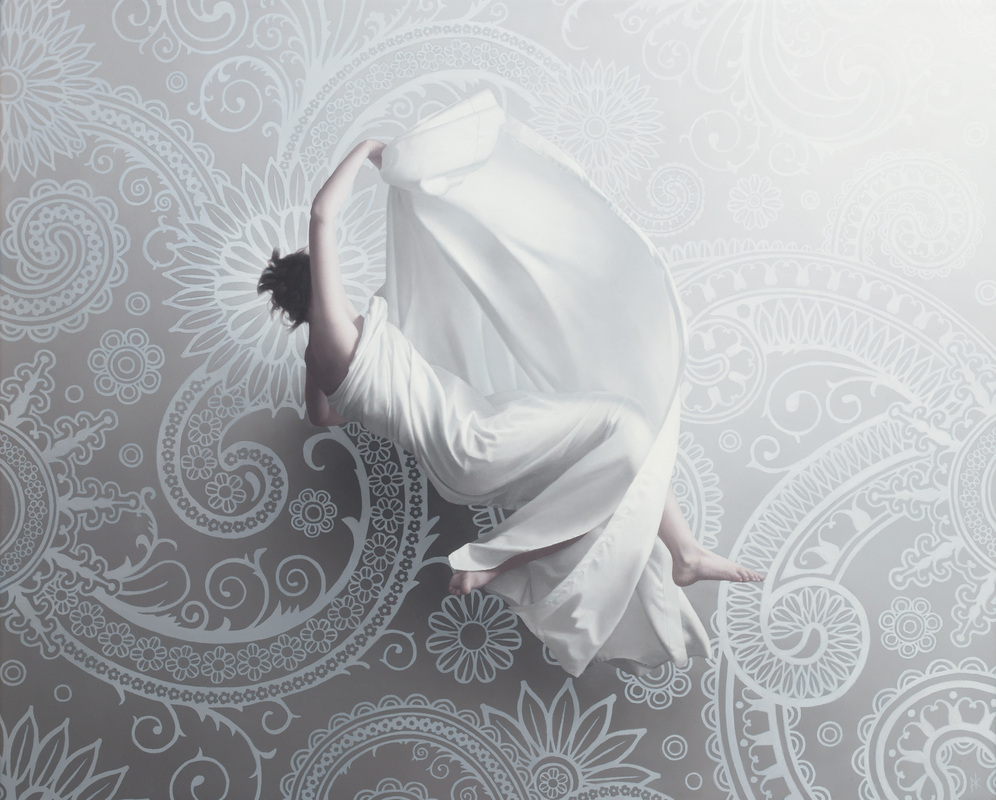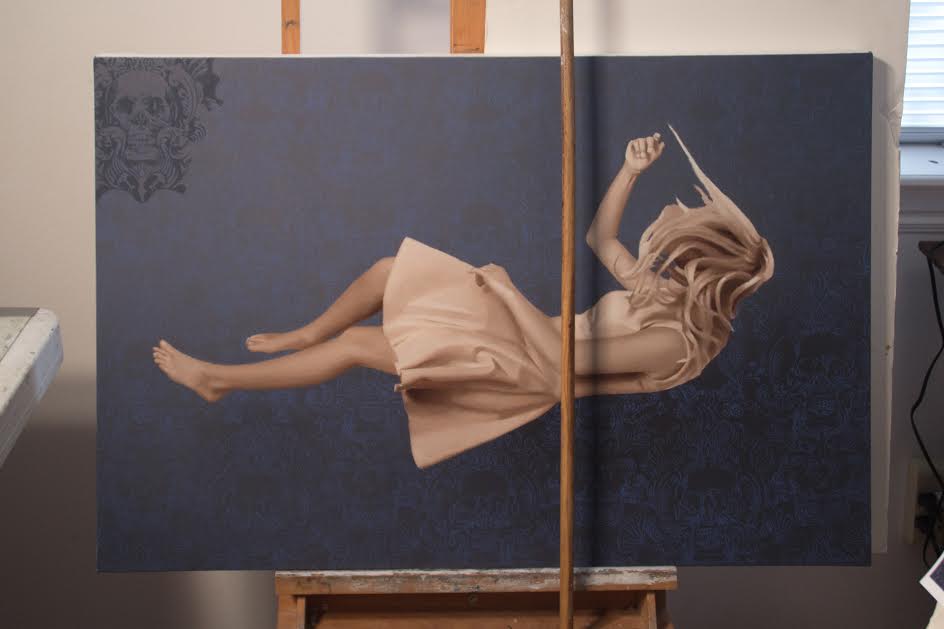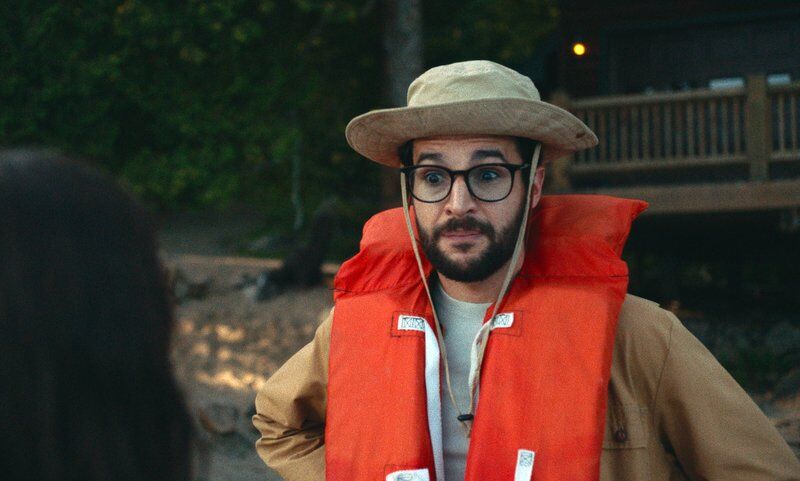Interview with Amazing Photorealist Artist Patrick Kramer
Recently Patrick Kramer has been absolutely lighting it up in the art world. His two works ‘Gravity’ (above) & ‘Lifting the Shroud’ (towards the bottom of this post, painting of a woman in a white dress) have been highlighted on My Modern Met, Daily Mail, Twisted Sifter, Beautiful Life, Ultralinx, et al., you get the idea. Search for Patrick’s name and you’ll very quickly realize he is a very hot topic around the interwebs. Even Reddit has a thread highlighting him as artist of the day.
But I do wonder how much of this press just glosses over the surface of these amazing works and they just ultimately accumulate into a few thousand thumbs up and not much more consideration at all. Is it that modern viewers like the exactitude of it? Or are we all just following the carnival barker into this latest carnival grotesquery, or this latest marvel? Or are these artists real artists with something very real to say about our plight and the conditions of our lives today? So in reaching out to Patrick Kramer one of the questions I set before myself to consider is simple enough. Are photorealists real artists? Is the mere reproduction of a scene or a photograph by hand enough to imbue it with some inherent social context, or enough social commentary to make it actual art? Or should we instead hire Xerox to perform at galleries across the nation instead? Here, take a look at just a few of Kramer’s more well known pieces and consider the question for yourself…
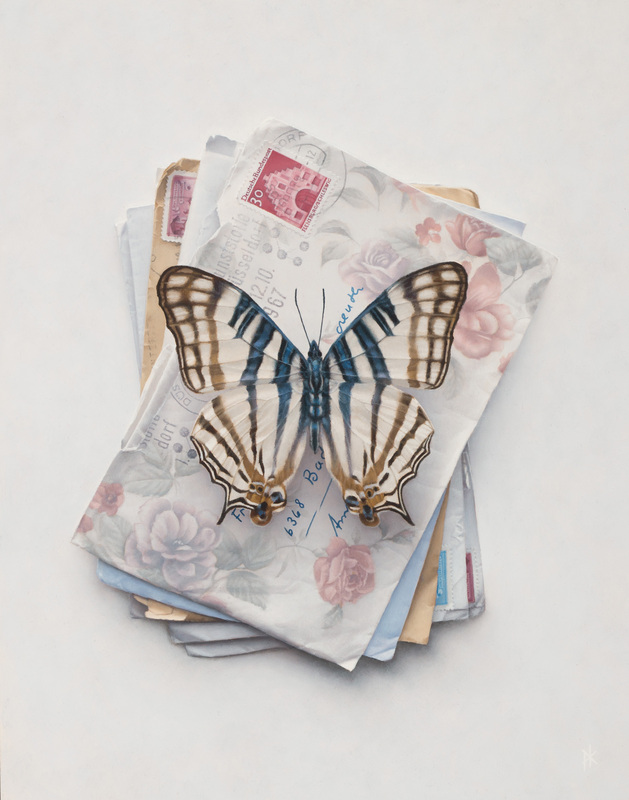

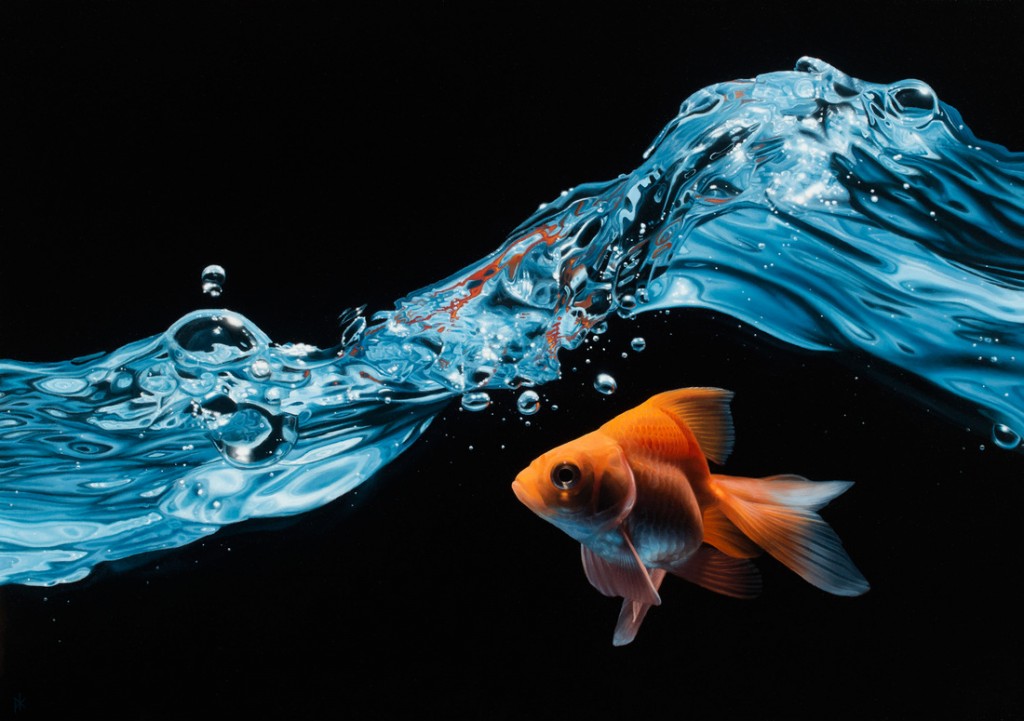
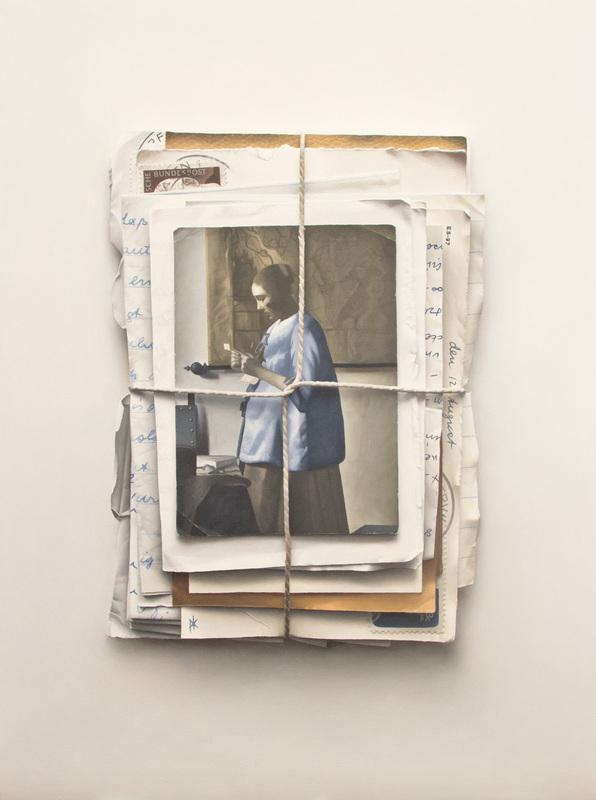
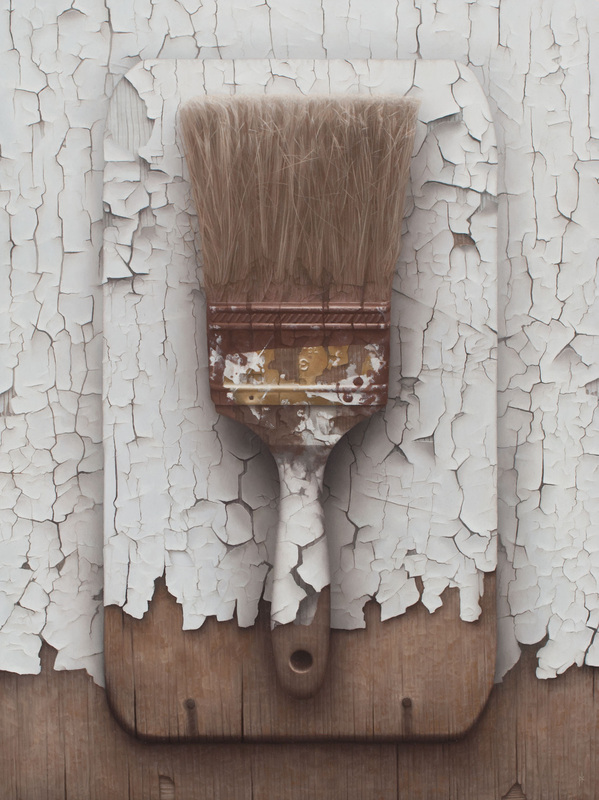
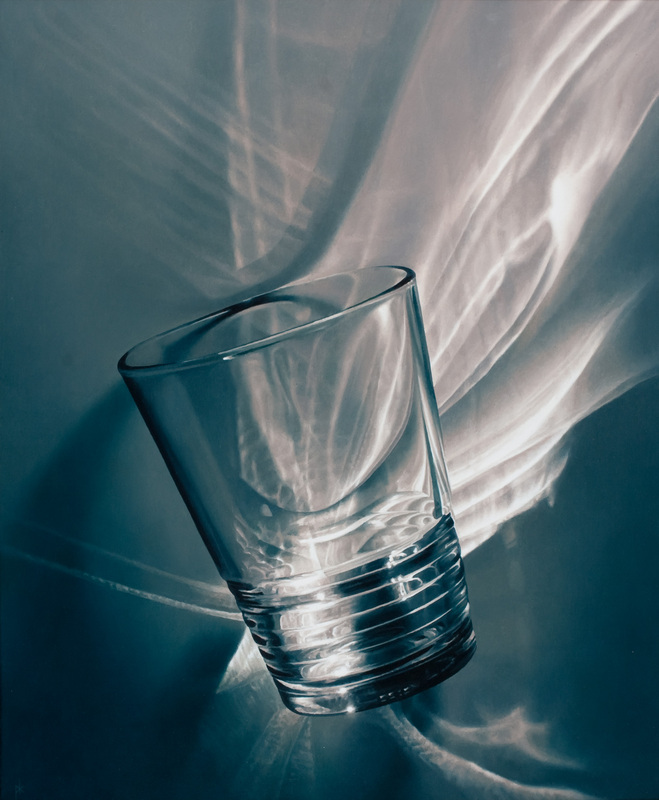
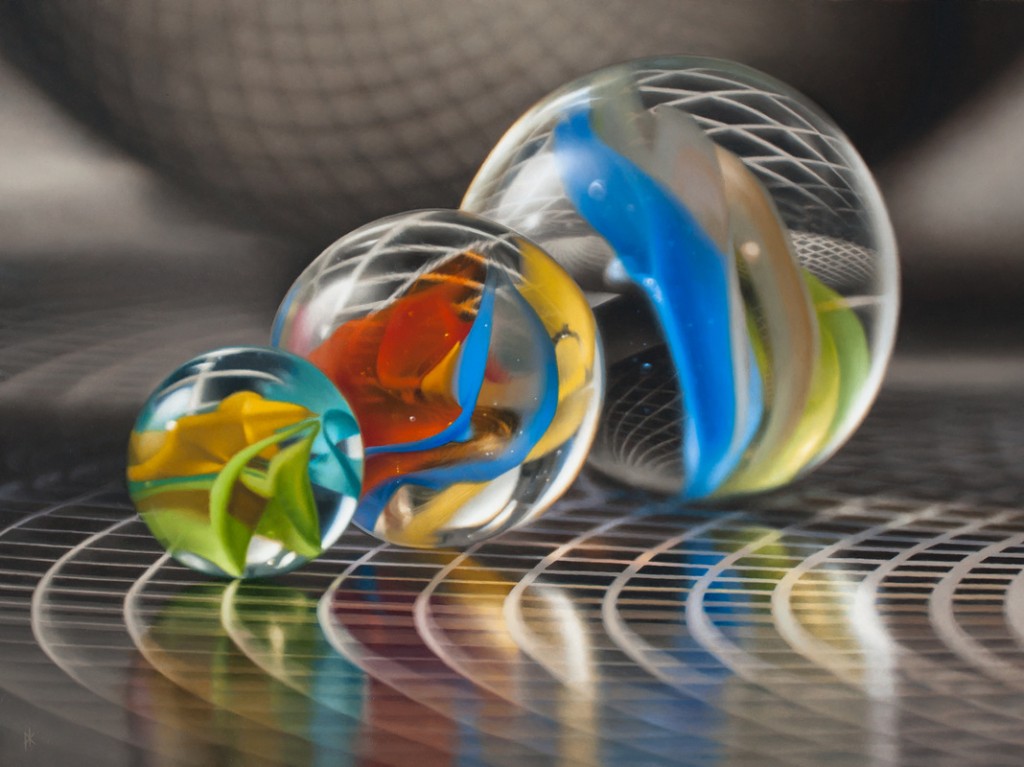

Paul Cadden speaks well on behalf of all ultra realistic artists when he speaks of his work and the intricacies involved:
Although the drawings and paintings I make are based upon photographs, videos, stills, etc., the idea is to go beyond the photograph. The photo is used to create a subtler and much more complex focus on the subject depicted – the virtual image becomes the living image, an intensification of the normal. These objects and scenes in my drawings are meticulously detailed to create the illusion of a new reality not seen in the original photo. The Hyperrealist style focuses much more on its emphasis on detail and the subjects depicted. Hyperreal paintings and sculptures are not strict interpretations of photographs, nor are they literal illustrations of a particular scene or subject. Instead, they utilize additional, often subtle, pictorial elements to create the illusion of a reality which in fact either does not exist or cannot be seen by the human eye. Furthermore, they may incorporate emotional, social, cultural and political thematic elements as an extension of the painted visual illusion; a distinct departure from the older and considerably more literal school of Photorealism.
So, at least we see from Cadden’s perspective, that obviously Hyperrealists interlace their works with thematic elements that carry meaning beyond simply reproducing exactly the world they see. And I would even go a step further and say that while I distinctly disagree with anyone who might say beauty is in the eye of the beholder (how then would we share anything of beauty otherwise, or better yet, how do we communally appreciate anything collectively otherwise?). I would say that the natural world around us is filled with beauty and heartbreaking realities and are just awaiting to be commented on by artists the world over. By the simple act of Cadden, Geddes, or Kramer reproducing the beauty that is around us, or even the darkness around us, they are highlighting something distinct and beautiful, or horrific, just simply in their selection of said item. Never mind the obvious interpretation brought to the table by the particular artist.
As an illustration of this fact, it would be a fascinating experiment to hand a photo to three distinctly different Hyperrealists and commission them (without their knowledge, of course) to recreate it. I guarantee you the results would be startlingly different and would highlight something different in the photo that the particular artist resounded with or was moved by. For Cadden he’d choose pencil, and would really work the highlights and the dark tones probably. For Geddes he might possibly resound with the gritty aspects of the photo and pull those to the front. And for Patrick, I don’t know, he may fall in love with that particular sun flare, or in that moment of levity, and really expound on that. But I guarantee you, we would see a truly different piece from each one, with different emotional registers, and even different implied meaning or purpose in each one. (Anyone want to give me some cash so we can conduct this experiment? It’s for science, people!)
So I thought, heck, let’s ask the artist himself about his position on whether or not Hyperrealism is in fact art. And Patrick was kind enough to oblige me. His insights were eye opening,
“I have come to conclude that the purpose of representational painting in the age of photography lies not just in the image created, but in the experience the work of art provides the viewer. Chuck Close has referred to himself as an “orchestrator of experiences,” a title applicable to myself and all other artists. Artists have always created experiences for the viewer through their work, but the value of these experiences is particularly relevant in my work due to the fact that there are much simpler methods of producing essentially the same image.
“I don’t want to downplay the art of photography, or the significance of the image. I spend a great deal of time and effort ensuring that the images I create are as beautiful as I can manage. But by creating these images in the most difficult, time consuming, impractical method available to me, I am constructing an object of art that provides a unique experience for the viewer, unattainable through photography. The performance of my creative act – the time spent in this arduous process, making minute decisions in prolonged periods of intense concentration and heightened attention – creates a unique art object and experience for the viewer that could not be achieved otherwise.”
It does, in fact, create unique artist experiences for us, Patrick – and you are correct, it wouldn’t be achieved otherwise. I personally find myself squinting and staring. I pull back and ponder the whole, and then I bury my face in close to find the alchemy that achieved such a high fidelity experience of the real. It strikes me that Patrick is Morpheus – and he has conjured an unforeseen reality out of thin air. It’s quite the experience.
After posting my initial draft of this story I was contacted by one of Patrick’s collectors and we began chatting a bit about the detail in each of his pieces. And, being the forward me that I am, I thought, heck… why not ask for a few high-res detailed shots of the pieces he owned. And so he shared a few with me. They are so high res they may take a second to download. But when you press your nose up against the glass of your monitor you’ll begin to barely make out the brush strokes in each piece.

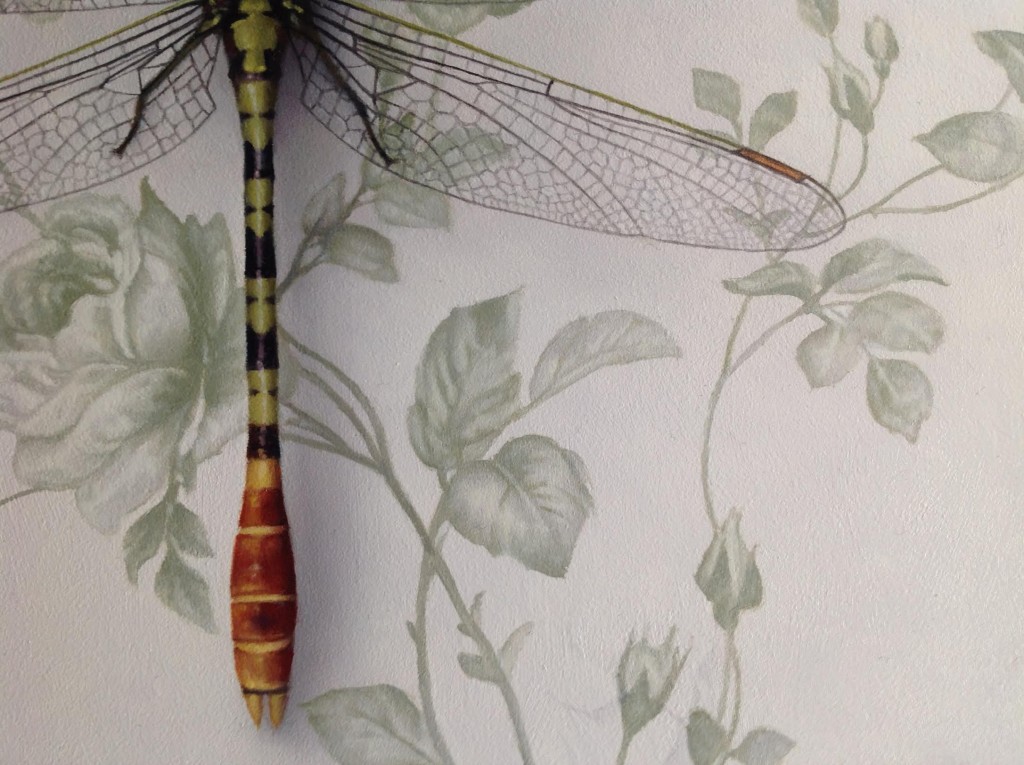

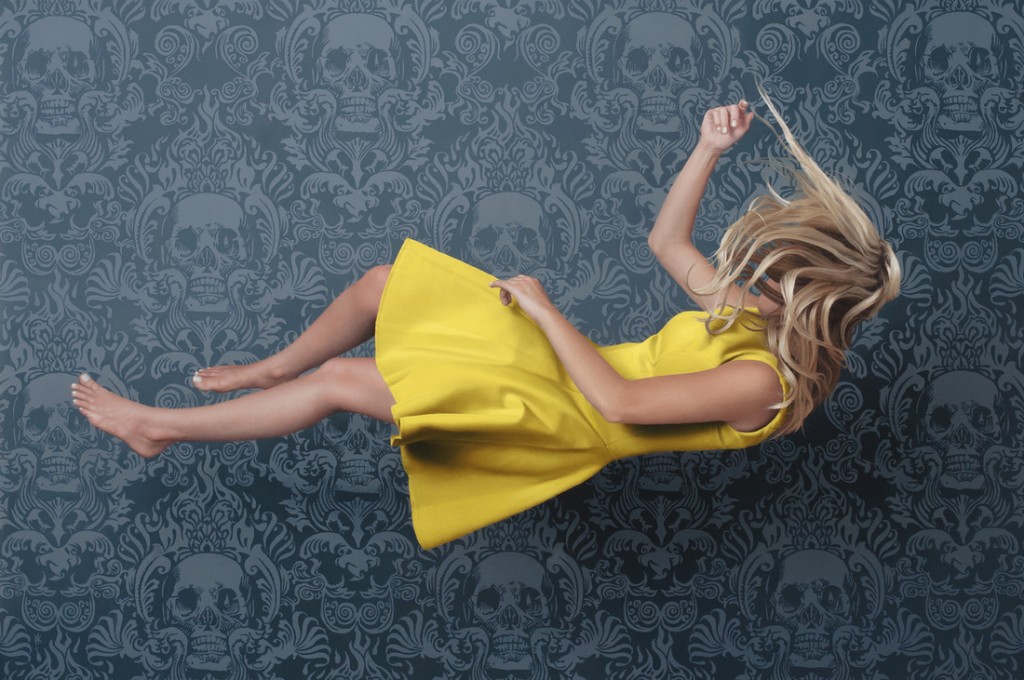
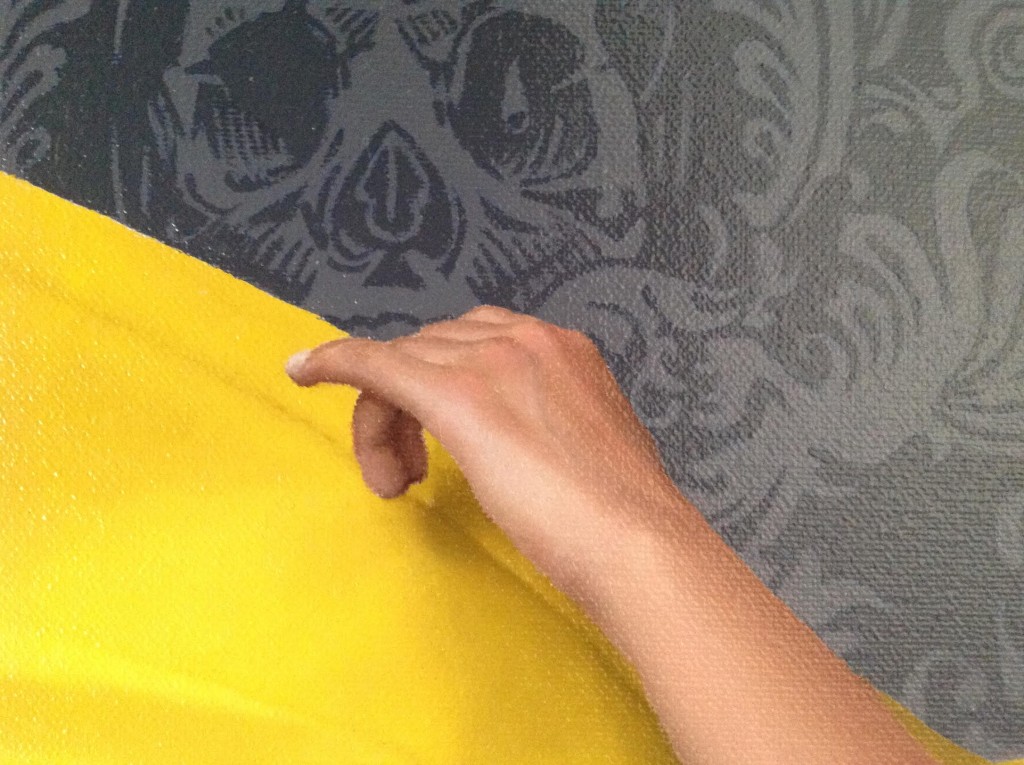
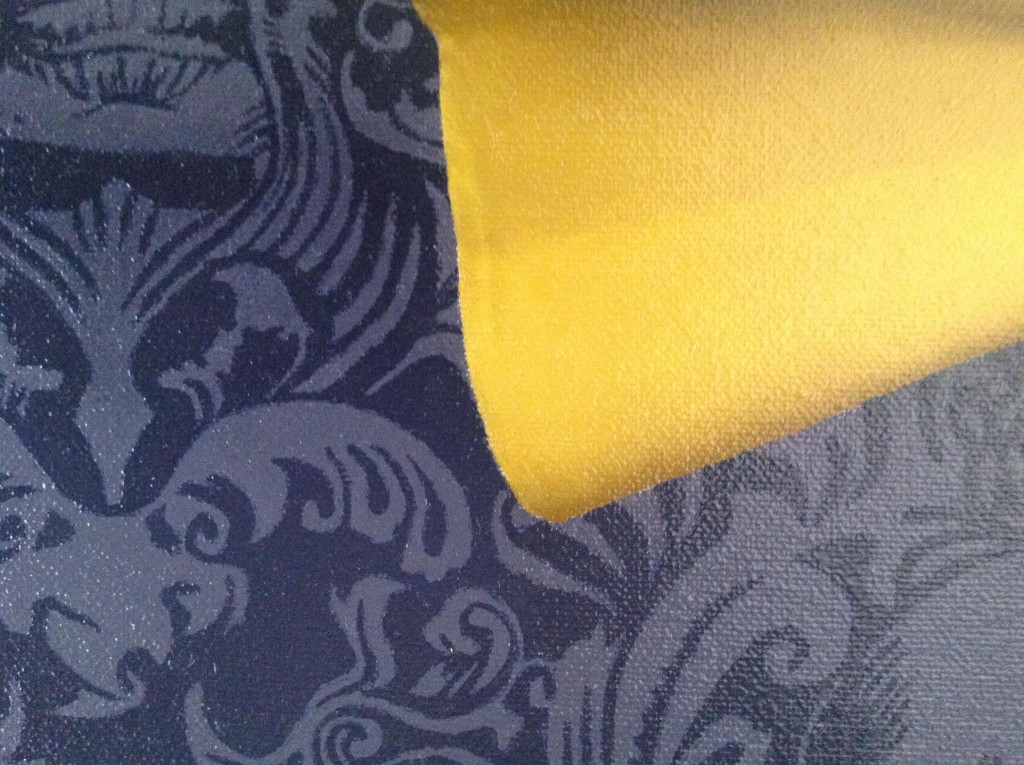


So, with that in mind, Patrick was kind enough to take time out and chat about this crazy detailed work of his. And for that, I’m really thankful that he did, because there’s a lot more here than meets the eye. So put down your phone. Stop. Don’t just read the words and move on. Open each image. Pour over the details that Patrick has so laboriously recreated here for you to contemplate. Don’t look for the like button. Don’t try to thumb it up. If you dig what Patrick is doing, then feel free to comment or buy one, or a print. But otherwise, read the interview, and just reflect on the beauty of this art and realize that a guy, with a paint brush poured out hundreds and hundreds and hundreds (literally) of hours of his life to point us to the artistic statement in front of you.
So I guess what I am asking you to understand… is that each of these paintings are a detailed labor of love meant to share something beyond the paint, and the technical how of it.
Taylor – Are there artists out there painting today that you would purchase and put on your walls if given the opportunity? Or artists painting today that you admire?
Patrick – I’ve always loved Richard Estes. He was one of the artists who originally got me interested in Hyper / Photorealism. I’d love to have one of his cityscapes on my wall. (It’s funny, because I don’t particularly like big cities, but I’m fascinated by his urban reflections.)
Other contemporary realists I admire are Jeremy Mann, Jason de Graaf, Anthony Waichulis, Jeremy Geddes, Daniel Sprick… If I was rich I’d own an original of each.
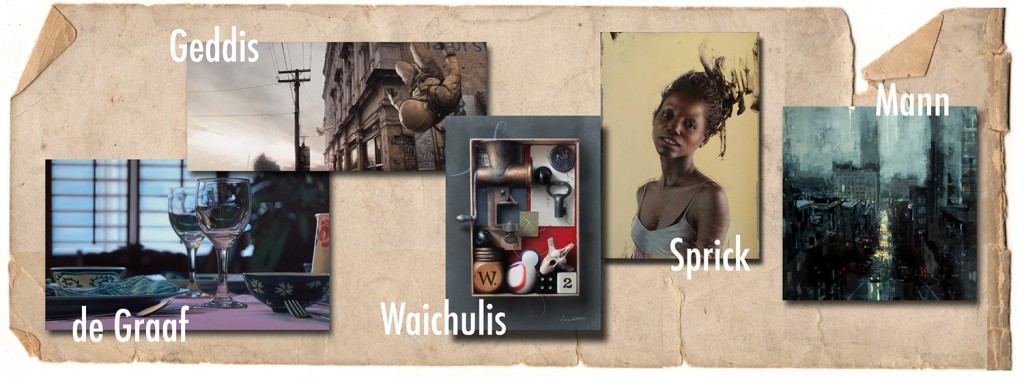
Taylor – In another interview you said, “I look at loose painters and get a little envious, I like the idea of perhaps making something loose and expressive contrasted with something hyper-real. I would like to combine the two styles someday.” I actually love the style in your paintbrushes (“Creation” and “Perseverance” specifically) as well as in your “Venus” and “Fading Vermeer” pieces. Are these examples of your attempting to loosen it up? Or do you have something else in mind? To be clear, the various permutations of the Salt Lake Library are complete marvels to behold… but I can’t imagine they were simple to achieve!
Patrick – I suppose the splatter effects in “Creation,” “Perseverance,” and “Venus” are my quasi-attempts at adding some looseness and spontaneity to my work, but it’s not truly loose because it was all planned out in Photoshop beforehand. The process was sort of a “controlled chaos,” which is a concept that was rather fun for me. I could experiment with random paint splatters, but not give up that control, which I would guess is pretty important to most hyper-realists.
Taylor – Have you ever done prints? Or wider releases of any of your works?
Patrick – It’s strange because when you’re starting out as an artist, you’re making minimum wage, but creating paintings for the top 1%. It’s weird to be making a luxury good that you feel you could never afford yourself. I actually just started selling prints of a few of my paintings. Besides supplementing my income, I really like the idea of reaching a wider audience, being in the price range of people who could never afford original art. (Here’s a link to Patrick’s prints page – buy one of each and tell him I sent you! – Ed.)
Taylor – You once said, “…with each passing day, I was calculating my hourly wage. Starting out, the sales price of my paintings never really matched the hours spent on the piece, which could be quite depressing for an artist trying to start a career.” I believe you were considering the fact that you had spent 6 weeks working full time on the “Salt Lake Library” piece. By my math, that is something like 250 hours on a single painting – and if you sold it for, $2,500 you were basically working minimum wage for that six week duration! (Not to be relentlessly anal or to turn art into a laborers task, but…) You have to consider your art a business at some point, no? How does your style and method play into the sheer economics of the development of your pieces? Honestly, not trying to be crass, just taking a realistic approach to your amazing detail and investment.
Patrick – Yeah, when I did the math on “Salt Lake Library,” I made less than 5 bucks an hour. Not exactly a livable wage. At some point, I had to look at the business side and figure out how to make a living. I frequently paint simple compositions that I can complete much quicker, and I find I enjoy painting more when I’m less stressed about how long a piece is taking. (Not to say that the economics are my sole motivation when creating a more simple piece, but it is a factor.)
Taylor – You seem to have fun with many of your pieces – and some of your work seems built specifically for Pinterest, or Instagram (i.e., your goldfish pieces maybe?). How do you decide if your next piece will be more tongue in cheek, or if it will be more of a serious trompe l’oeil piece?
Patrick – My work can be pretty diverse. Honestly, I think it’s just different aspects of my personality. Sometimes I want to make a painting that is more somber and sincere, a work that has personal meaning to me. At other times, I just want to make a painting that makes me laugh. Maybe it’s just me trying to find myself… I don’t really know if I’ll go in one direction or the other as I mature as an artist.
Taylor – I just interviewed Mark Demsteader from the UK, and he talked about how hard it was to get his first gallery break… but he is now considered one of the most successful figure painters in all of England. You seemed to come by your gallery representation fairly easily, no? Or was it more difficult than you made it sound?
Patrick – Getting into a gallery wasn’t really that difficult. I started selling at Coda Gallery (now Trove Gallery) in Park City 6 months after graduating from college. I quickly discovered, however, that there is a big difference between having your work shown in a gallery, and actually selling that work. I’m just now starting to feel that I might be able to make a living doing this. I’m 33…
Taylor – Finally, your pieces are gorgeously arranged from your color selections, to backgrounds, to your subjects, etc. How do you come by your arrangements?
Patrick – I use Photoshop quite a bit in my compositions. It’s great for playing with different color schemes, backgrounds, etc. I work everything out before I actually start painting.
Taylor – And just as a really stupid question I would never admit that I asked… how does one create the repeating background of the wallpapers on your falling women paintings? I adore them… (the women are lovely too mind you…).
Patrick – The repeating pattern of the wallpapers was done by first painting a solid background color, then tracing a printout with transfer paper (a chalky paper that easily rubs off) to create a contour drawing, then painting in these outlines in the appropriate color.
It’s not really difficult, just time consuming to get all tiny patterns. (Here’s a process shot… below.)
Thanks a ton, Patrick, for taking the time out to chat! It was a real pleasure to speak with you and dig in and learn more about your amazing work. In a world of fast food culture and Instamatic everything, I think there is something amazing to be said about someone like Patrick who has reached the pinnacle of success in his field and is still considering the meaning and importance of art in this world today.
Edited by, CY

